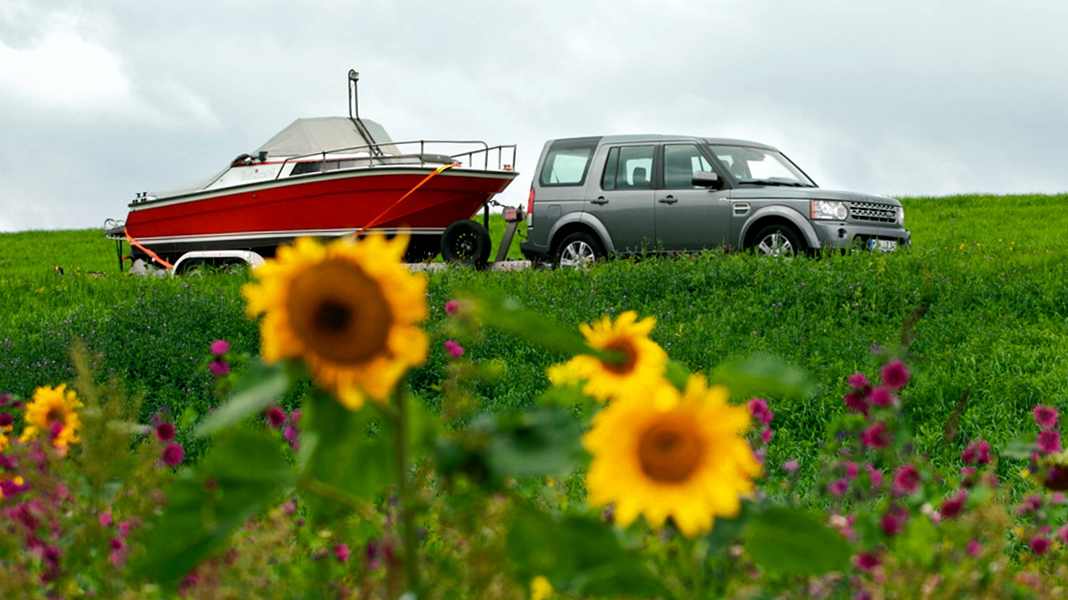
By boat from Hamburg to Berlin in six days? Or would you prefer six hours? Sure, the journey is the destination and leads on its own keel via the Elbe, the Elbe-Havel Canal and the Lower Havel Waterway through lots of nature and cities such as Lauenburg, Magdeburg and Potsdam. Meanwhile, the trailer captain is stuck in a traffic jam at the Wittstock/Dosse motorway junction. Or not.
In any case, he arrives at his destination much faster than his "colleague inland skipper". What's more, if he wants to, he can be relaxing in the sun on his boat off the coast of Croatia or in Niendorf on the Baltic Sea just a few days later. Provided he has adhered to the most important "rules of the game" when travelling by road. Our trailer ABC reveals what you need to bear in mind when travelling with a trailer and how to get to your destination safely and comfortably.
PART 2: LOADING - CHECKLIST
LOADED
The main weight of the boat must be on the keel rollers. To do this, these must be adjusted according to the course of the keel. If possible (note the drawbar load), the boat transom should be flush with the last keel roller. Side supports should support much more than they carry and be adjustable to make slipping easier. If you want to reduce vibrations, front side supports are also recommended from a certain boat size.
In any case, the boat must be firmly attached to the trailer (see lashing). If the load protrudes more than 1 metre beyond the rear reflectors and lights, it must be marked by suitable means - bright red flag, sign, cylinder or a light with bright red light (at dusk and in the dark).
Important: Do not leave any loose objects in the boat while travelling, as these can fly around uncontrollably, damage the boat and - in the worst case - endanger other road users.
LIGHTING
Like the towing vehicle, the trailer must be equipped with functioning rear lights, brake lights, indicators, rear fog light and two rear reflectors. From a trailer width of 2.10 m, skippers must fit a white clearance light on each side facing forwards and a red clearance light facing backwards. Trailers that are longer than 6 metres must be fitted with lateral yellow, non-triangular reflectors on the long sides.
Trailers over 6 metres in length put on the market for the first time from 1994 onwards must also have amber side marker lights. As these lights - unlike the light strip - cannot be removed for slipping, water can penetrate the lights, they can deteriorate and can cause a short circuit in the electrical system. For this reason, some trailer manufacturers have special authorisations and do not have to fit these lights.
BOAT COVER
A cockpit cover saves more fuel than a complete cover. Although the full cover protects the boat better, it must be lashed down perfectly if it is not to cause chafe marks on the boat.
BRAKING WITH THE TENSIONER
The braking distance is always longer with a combination than with a solo vehicle. For this reason, you should always keep your distance (at least half the speedometer) and drive with foresight to avoid abrupt braking manoeuvres. Special care should also be taken with unbraked trailers. With an unbraked 700 kg trailer, the braking distance increases by around 7 metres compared to a braked trailer of the same size. And that's a lot of wood, especially in an emergency, where every centimetre counts.
BUGRAD
The front or support wheel of the trailer should be checked carefully before every journey. The spindle for turning up and down and the clamping screws (two are always better than one) must be firmly tightened. A tip: A rope can be used to secure the spindle on the winch stand to prevent it from shaking loose.
BUGSTÜTZE
The bow support is used to secure the boat to the front of the trailer. Important: Use the cable winch to pull the boat into the bow support until both side supports of the support are firmly in contact with the bow.
CHECKLIST
The following points should be checked before travelling with the trailer:

